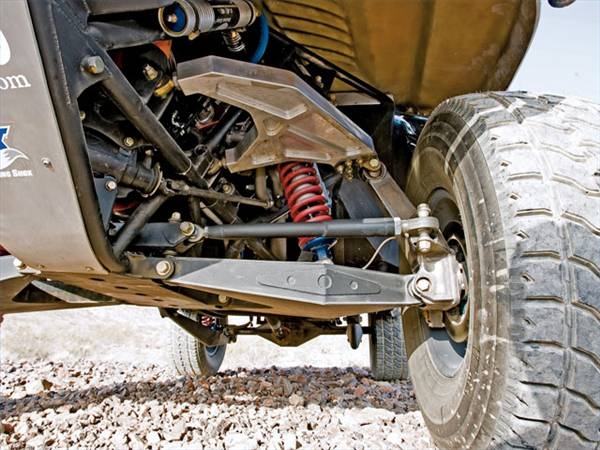
The Chevrolet Blazer has two variants with two completely different front-end designs, but fixing them is a similar process. The K-5 Blazer, the larger of the two, has a solid front axle design, while the S-10 Blazer has a front differential and constant velocity joints. The S-10 style is the more complicated of the two, and is referred to as an Independent Front Suspension, or IFS. Problems can be numerous, but are usually found in a few key areas. It should take the backyard mechanic anywhere from a few minutes to a few hours to locate and fix a problem with the front end.
Determine the problem with the front end. Ball joints will cause the wheel to come out of alignment, or wiggle when driving. Worn out shocks will cause a bounce at high speeds or fail to cushion hard jolts. The front differential and CV axles may leak oil due to bad seals or gaskets. A flashlight will come in handy when peering into the crevices of the front end to find faults. Blazers are notorious for having faulty ball joints and tie rod ends, especially if the truck has been off road frequently.
Repair the faulty part. Several other components may need to be removed to access the faulty part. Some repairs, such as shocks, will be simple bolt-on replacements. Others, such as a failed front differential, will necessitate CV axle removal to gain access, and could take several hours to complete. Ball joints will require special tools to press them in and out, as will the front springs or torsion bars.
Check bushings and zerk points often--before and after any repairs. The front-end bushings will wear prematurely or unevenly if there is a problem. Zerk points should be lubed with a grease gun at regular intervals, and if any of the points take an excessive amount of grease or leak, they will need to be replaced. Zerk nipples differ by year, but typically there are at least a dozen on the front end for all moving joints. On later model Blazers, there are over 15 zerks, one for each of the ball joints, tie rod end linkage and wheel bearings. Axle grease is sold in convenient tubes for use in zerk guns, and can be purchased in heavy-duty weights.